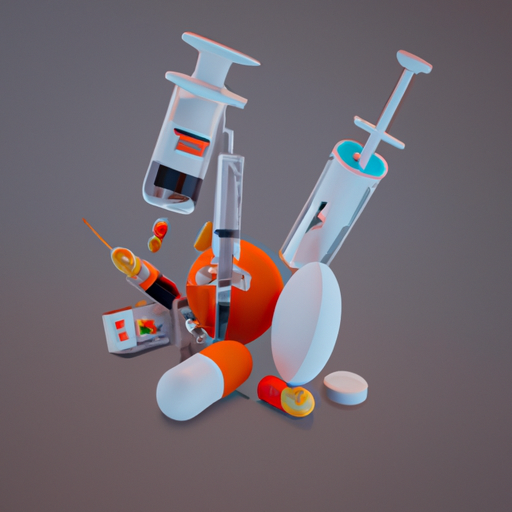Symptoms
Varicose veins and chronic venous insufficiency (CVI) share many of the same symptoms, such as leg pain, swelling, and aching in the legs. Both can also cause the classic dark-blueish, twisted veins on the surface of the skin. CVI can be an especially dangerous condition as it can lead to a greater risk of developing blood clots, skin ulcers, and other serious circulation issues. In some cases, CVI can even lead to disability. Generally speaking, medical professionals recommend that if you are having any of these symptoms, it is best to seek medical attention to determine if it is due to varicose veins or CVI. Treatment for the two conditions is different, so understanding the difference can help ensure that the condition is properly managed.
Causes
When it comes to the causes of Varicose Veins and Chronic Venous Insufficiency (CVI), it is important to understand that many of these causes arise from a combination of genetic factors and lifestyle choices. Genetics may predispose a person to developing Varicose Veins, due to the structure of their veins and the size of their blood vessels. Other factors such as weight, age, gender, and occupation can all contribute to the development of Varicose Veins and CVI. Lifestyle choices such as smoking, sitting or standing for long periods of time, dietary choices, and lack of exercise can also increase a person’s risk of developing Varicose Veins and CVI. It is also important to note that certain medical conditions such as deep vein thrombosis (DVT) and pregnancy can also increase the risk of developing Varicose Veins and CVI.
Treatments
Varicose veins and Chronic Venous Insufficiency (CVI) are two conditions that are related to circulatory problems in the veins of the legs. Treatment of varicose veins and CVI generally involves lifestyle changes, such as wearing compression stockings and elevating the legs. However, there are also medical treatments available for more severe cases. Common treatments include:
- Sclerotherapy: A solution is injected into the vein to close it off.
- Vein Stripping: The affected vein is removed through a small incision.
- Endovenous Laser Ablation: Heat is used to collapse the vein.
- Radiofrequency Ablation: Radio waves are used to close the vein.
- VenaSeal: A medical adhesive is used to seal the vein.
These treatments are usually minimally invasive and the recovery time is usually short. While these treatments can be effective, they may not be suitable for everyone and should only be used under the advice of a specialist.
Differences between Varicose Veins and Chronic Venous Insufficiency
Varicose veins and chronic venous insufficiency (CVI) are two conditions of the circulatory system that can share similar symptoms but are not the same. Varicose veins are enlarged, swollen veins that often appear in the legs and can be painful and uncomfortable. CVI is a more serious condition that occurs when the veins are unable to circulate blood back to the heart due to weakened valves and other blockages. It can cause swelling, pain, and other symptoms in the affected areas. While varicose veins can be treated with lifestyle changes, sclerotherapy, or surgery, CVI often requires more intensive treatment, such as compression therapy, phlebectomy, or endovenous laser ablation. Regardless of the treatment chosen, it is important for those suffering from any of these conditions to speak with their doctor and make a plan that is right for them.
Prevention
Most cases of Varicose Veins and Chronic Venous Insufficiency can be prevented by taking certain precautions. There are several lifestyle changes one can make to help minimize their risk of developing either condition. Here is a list of preventive medicine steps to take:
- Exercise regularly to help keep your veins in shape.
- Maintain a healthy weight to reduce your risk of developing varicose veins.
- Quit smoking to prevent the narrowing of blood vessels in your legs.
- Avoid overusing laxatives, which can increase your risk of chronic venous insufficiency.
- Wear compression stockings to reduce swelling in the legs.
- Avoid sitting or standing for too long, as this can increase your risk of developing venous insufficiency.
These lifestyle changes can help prevent Varicose Veins and Chronic Venous Insufficiency from occurring. Additionally, regular checkups with your doctor can help detect any early signs of either condition. Early detection and treatment can lead to a better outcome for the patient.
Prognosis
When it comes to the prognosis of varicose veins and chronic venous insufficiency, it is important for individuals to seek medical attention immediately. Left untreated, these conditions can lead to a number of serious complications, including skin ulcers, bleeding, and even blood clots. Early diagnosis and treatment of varicose veins and chronic venous insufficiency are essential for preventing these and other complications. Treatment options depend on the severity of the condition and may include lifestyle changes, compression stockings, sclerotherapy and surgery. With early diagnosis and proper treatment, prognosis for these conditions is generally positive.


No Comments